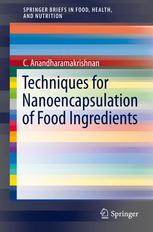

Most ebook files are in PDF format, so you can easily read them using various software such as Foxit Reader or directly on the Google Chrome browser.
Some ebook files are released by publishers in other formats such as .awz, .mobi, .epub, .fb2, etc. You may need to install specific software to read these formats on mobile/PC, such as Calibre.
Please read the tutorial at this link: https://ebookbell.com/faq
We offer FREE conversion to the popular formats you request; however, this may take some time. Therefore, right after payment, please email us, and we will try to provide the service as quickly as possible.
For some exceptional file formats or broken links (if any), please refrain from opening any disputes. Instead, email us first, and we will try to assist within a maximum of 6 hours.
EbookBell Team

5.0
108 reviewsNanoencapsulation has the potential to improve human health through its capacity to both protect bioactive compounds and release them at a specific time and location into various substances, including food. Numerous nanoencapsulation technologies have emerged in recent years, each with its own advantages and disadvantages. The goal of this Brief is to discuss the various nanoencapsulation technologies, such as emulsification, coacervation, inclusion encapsulation, anti-solvent precipitation, nanoprecipitation, freeze drying, and spray drying, including their limitations. Recent safety and regulatory issues concerning the various nanoencapsulation technologies will also be covered.